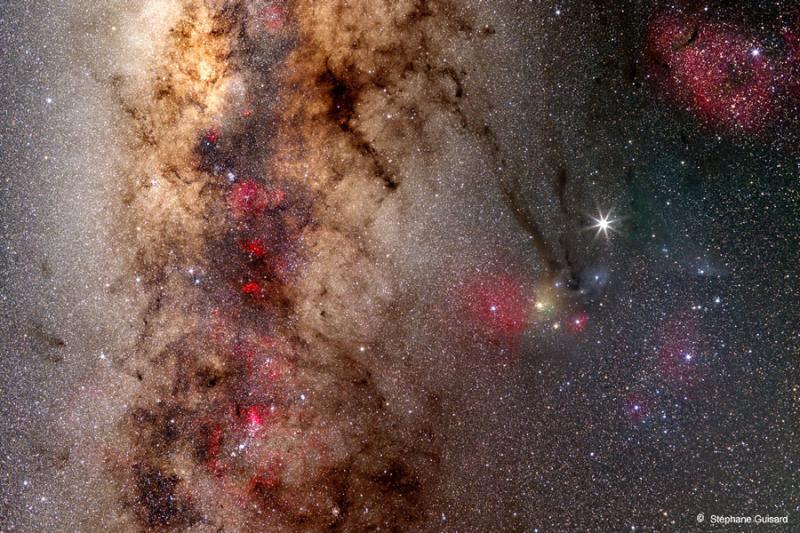Credit & Copyright: StIphane Guisard
Explanation:
If Scorpio looked this good to the unaided eye, humans might remember it better.
Scorpio
more typically appears as a few bright stars in a well known but rarely pointed out
zodiacal
constellation.
To get a spectacular image like
this, though, one needs a good
camera, color
filters,
and a digital image processor.
To bring out detail, the
above image not only involved long duration exposures taken in several colors,
but one exposure in a
very specific red color emitted by
hydrogen
that brings out great detail.
The resulting image shows many breathtaking features.
Vertically across the image left is part of the
plane of our
Milky Way Galaxy.
Visible there are vast clouds of bright stars and long filaments of dark
dust.
Jutting out diagonally from the
Milky Way in the image center are
dark dust bands known as the
Dark River.
This river connects to several bright stars on the right that are part of
Scorpio's head and claws,
and include the bright star
Antares.
Numerous red
emission nebulas and blue
reflection nebulas
are visible throughout the image.
Scorpio
appears prominently in southern skies after sunset during the middle of the year.
1999 2000 2001 2002 2003 2004 2005 2006 2007 2008 2009 2010 2011 2012 2013 2014 2015 2016 2017 2018 2019 2020 2021 2022 2023 2024 2025 |
Yanvar' Fevral' Mart Aprel' Mai Iyun' Iyul' Avgust Sentyabr' Oktyabr' Noyabr' Dekabr' |
NASA Web Site Statements, Warnings, and Disclaimers
NASA Official: Jay Norris. Specific rights apply.
A service of: LHEA at NASA / GSFC
& Michigan Tech. U.
|
Publikacii s klyuchevymi slovami:
Scorpius - night sky - Skorpion - nochnoe nebo
Publikacii so slovami: Scorpius - night sky - Skorpion - nochnoe nebo | |
Sm. takzhe:
Vse publikacii na tu zhe temu >> | |
